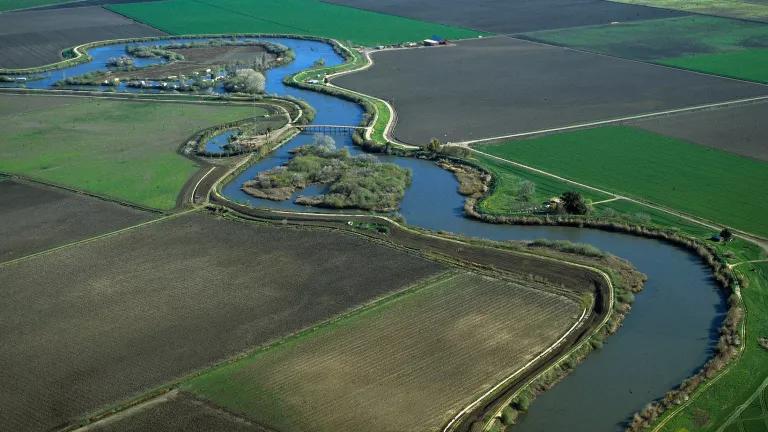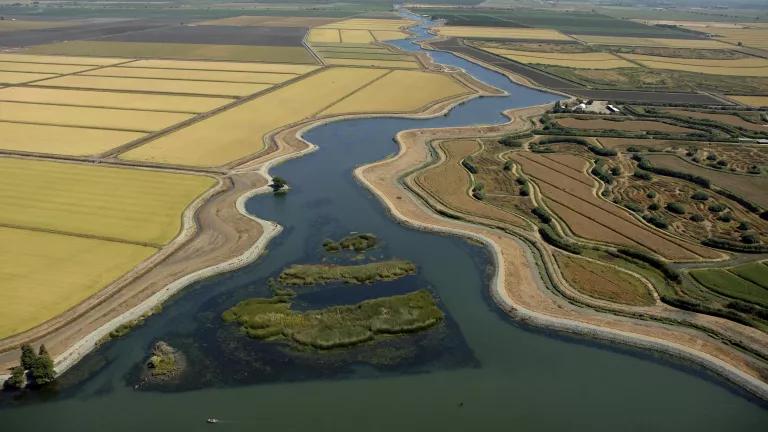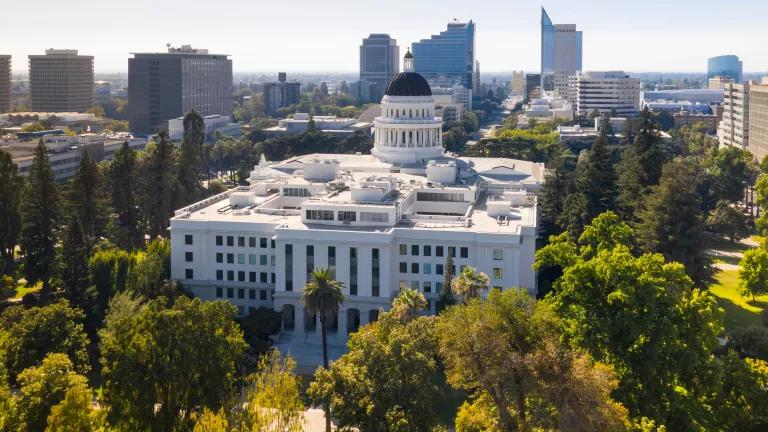DWR’s Latest Misinformation About the Delta Conveyance Project
Delta Tunnel Project Would Not Have Increased Water Supply in 2023

CDWR
If the Delta Conveyance Project had already been constructed, in 2023 the project would have provided zero acre feet of additional water supply, while contractors would have had to pay as much as $1 billion or more to pay for the project this year. However, you’d never know this based on DWR’s latest misinformation about its Delta tunnel project.
Currently, the State Water Project’s and federal Central Valley Project’s existing pumping plants in the South Delta could be diverting a lot more water than they are today while complying with existing or even stronger environmental regulations. However, for the past several weeks the SWP and CVP have been pumping significantly less water than they are allowed to, because San Luis Reservoir is completely full, meaning there is no place for the CVP and SWP to store additional water diversions. Thanks to the near-record snowpack and storms this year, the SWP and CVP have announced 100% allocations for nearly all of their contractors. Some contractors are even getting more than 100% allocations - DWR reports that since March 22 the SWP has delivered an additional 228,000 acre feet of water to SWP contractors that have their own storage facilities (like Kern County Water Agency and the Metropolitan Water District of Southern California).
However, although DWR argues that the Delta Conveyance Project could have pumped more water in January, any additional pumping through the Delta tunnel earlier this year would not have increased water supply. That’s because the additional pumping simply would have filled San Luis Reservoir earlier in the year and caused the CVP and SWP to reduce Delta pumping. Over the past month, since San Luis Reservoir filled and pumping has been limited by “Limited real-time demand,” it appears that the CVP and SWP could have pumped nearly 200,000 acre feet of water more than they did, simply because of the lack of storage space south of the Delta.
While the Delta Conveyance Project would not have increased water supply this year, pumping through the Delta tunnel in January that DWR describes would have reduced survival of juvenile endangered winter-run Chinook salmon migrating downstream and would have harmed other native fish species. And in addition to harming the environment, the SWP contractors who agreed to finance the Delta Conveyance Project would be responsible for paying debt financing charges for the tunnel, even as they get no additional water supply. While DWR hasn’t released any updated cost or financing information about the Delta Conveyance Project (despite significantly increased construction costs and higher interest rates over the past several years), prior analyses of WaterFix costs from several years suggest that the annual costs (including debt financing and operating costs) for a $16 billion Delta Conveyance Project could be $1 billion per year or more.
In 2013, NRDC and a coalition of business groups, water districts and other conservation groups released our Portfolio Alternative for the Delta, which included new South of Delta storage to enable increased Delta water diversions in a year like this, while requiring protective operating rules for a 3,000 cfs single Delta tunnel that would reduce water diversions (and increase Delta outflow) in average and drier years.
In contrast, in 2022 DWR proposed a Delta Conveyance Project that significantly increases water diversions from the Delta in critically dry and dry years, and which results in environmental impacts that are even worse for salmon and other native fish and wildlife than the degraded status quo. Despite this environmental damage, DWR’s Draft EIR under CEQA doesn’t even consider any operational alternatives, including alternatives that reduce pumping in the drier years to protect fish and wildlife and water quality, even though other state agencies and the public explicitly called for analysis of operational alternatives that increase Delta outflow and reduce water diversions in most years.
Sadly, DWR has a long history of misinformation about the Delta tunnel project, such as their false claim about the cost of the single Delta tunnel project as part of our Portfolio Alternative for the Delta, which they finally admitted was wrong (by nearly $3 billion!) in late 2013.
As I wrote in 2013, the public deserves an honest conversation about the costs and benefits of a Delta tunnel project, including accurate information about the financial costs, potential water supply benefits, and adverse impacts to fish, water quality, and wildlife – and the fishing jobs and communities in the Delta that depend on a healthy estuary. That's still true today.



